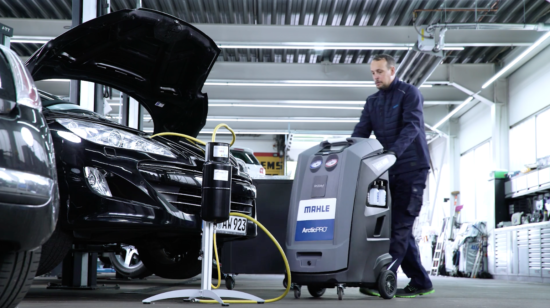Flushing air conditioning key to system longevity
 Due to the sweltering temperatures recently, demand for air-conditioning servicing has sky-rocketed (Photo: Mahle)
Due to the sweltering temperatures recently, demand for air-conditioning servicing has sky-rocketed (Photo: Mahle)
With record temperatures across the UK, demand for air conditioning servicing has boomed. During repair work, or changing the air compressor, it’s crucial that the air conditioning system is cleaned out, as harmful substances and solids can form in the refrigerant circuit, leading to component damage. In its latest technical messenger bulletin, Mahle offers six key prompts to clean the system and avoid consequential damage.
The first prompt to flush the A/C system is when the compressor has suffered mechanical damage such as where the oil contains metallic abrasion particles or swarf.
If there are foreign substances in the system, like sealant, desiccant granules, or rubber particles, the consumables in the system should be replaced and the system cleaned. If the quantity or type of compressor oil in the system is unknown, this presents a risk of overfilling or incompatibility, and in these instances the system should be flushed.
Technicians risk malfunctions, such as clogging of the valve plate, if the amount of UV dye is too high, or if there is moisture in the system. If the new compressor doesn’t have an oil drain plug to adjust the oil quantity, the air conditioning system must be completely emptied of oil before installation to prevent overfilling.
According to Mahle, technicians should always flush against the normal direction of the refrigerant flow. Some components cannot be flushed, so they need to be bypassed or replaced with adapters. Examples include filter-driers/accumulators, compressors, expansion valves, and fixed restrictors.
Most modern condensers can’t be flushed because of their parallel flow design and combination with the filter-drier. Only older types, so-called serpentine condensers, can be reliably flushed. In vehicles with a second evaporator in the cabin, this must be flushed separately.
Each flushing cycle should be completed three times, and the prefilter on the flushing unit should be replaced after each vehicle (flushing process).
Once all the removed or replaced parts have been refitted, a leak tightness test must be carried out, followed by evacuation of the system for at least 20 minutes.
Mahle also recommends that after the flushing has been completed the filter-drier is replaced. This removes the chance of any contaminants that may be in the old filter-drier working their way around the system. If it is not replaced, these contaminants could cause damage, as the filter-drier is bypassed on the flush, meaning this part of the system isn’t cleaned out of any potential contaminates.

 Ring Automotive
Ring Automotive

Comments